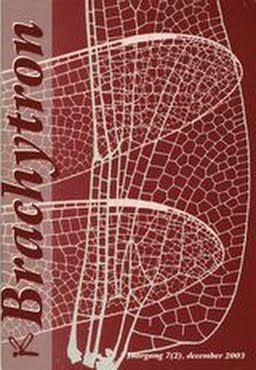2003
Ontwikkeling van de libellenfauna in een nieuw duinmeertje in de Amsterdamse Waterleidingduinen (Noordwijk, Zuid-Holland) Geschiedenis en periode 1999-2002
Publication
Publication
Brachytron , Volume 7 - Issue 2 p. 43- 51
In 1991 a layer of about half a metre of sand was removed in a dune area to create a wet dune valley vegetation. Due to a rising groundwater table a dune lake developed with from 1999 onwards more or less water. Its maximum depth is 1 m but it dries out periodically. The lake measures 100 x 150 m. The bottom consists of calcareous fine sand with little vegetation. The surroundings are covered by grass vegetation with many low shrubs and some low trees. The author has followed from its inception the water animals and plants that have invaded this (temporary?) dune lake (‘Meertje van de Blauwe Paal’). In this article the dragonflies are reported that live in this small lake for the period 1999-2002. In total twelve dragonfly species were recorded, most of which are characteristic pioneer species. The most abundant species were Enallagma cyathigerum, Sympetrum striolatum and S. fonscolombii. In lower quantities also occur Sympetrum vulgatum, Lestes barbarus, Orthetrum cancellatum, Lestes viridis, Anax imperator and Libellula quadrimaculata. Rare were Ischnura elegans, Sympetrum danae and Lestes sponsa.
| Additional Metadata | |
|---|---|
| , , , , | |
| Brachytron | |
| CC BY 3.0 NL ("Naamsvermelding") | |
| Organisation | Nederlandse Vereniging voor Libellenstudie |
|
Wim J. Kuijper. (2003). Ontwikkeling van de libellenfauna in een nieuw duinmeertje in de Amsterdamse Waterleidingduinen (Noordwijk, Zuid-Holland) Geschiedenis en periode 1999-2002. Brachytron, 7(2), 43–51. |
|
